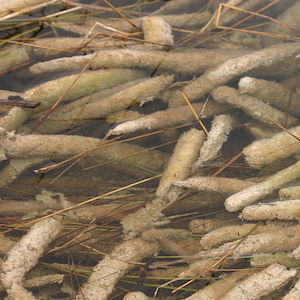In situ effects of arsenic, aluminium and chromium stresses on algal periphyton of the river Ganga at Varanasi, India

Submitted: 7 December 2022
Accepted: 30 May 2023
Published: 30 June 2023
Accepted: 30 May 2023
Abstract Views: 1030
PDF: 289
HTML: 20
HTML: 20
Publisher's note
All claims expressed in this article are solely those of the authors and do not necessarily represent those of their affiliated organizations, or those of the publisher, the editors and the reviewers. Any product that may be evaluated in this article or claim that may be made by its manufacturer is not guaranteed or endorsed by the publisher.
All claims expressed in this article are solely those of the authors and do not necessarily represent those of their affiliated organizations, or those of the publisher, the editors and the reviewers. Any product that may be evaluated in this article or claim that may be made by its manufacturer is not guaranteed or endorsed by the publisher.
Similar Articles
- Wei Han, Yuanshu Jing, Ting Li, Compensatory growth in Microcystis aeruginosa after moderate high-temperature exposure , Journal of Limnology: Vol. 74 No. 3 (2015)
- Satu Estlander, Jukka Horppila, Mikko Olin, Leena Nurminen, Should I stay or should I go? The diurnal behaviour of plant-attached zooplankton in lakes with different water transparency , Journal of Limnology: Vol. 76 No. 2 (2017)
- Colin J. WHITFIELD, Julian AHERNE, Shaun A. WATMOUGH, Marjorie McDONALD, Estimating the sensitivity of forest soils to acid deposition in the Athabasca Oil Sands Region, Alberta , Journal of Limnology: Vol. 69 No. s1 (2010): Impacts of sulphur and nitrogen deposition in western Canada
- Cristiana Callieri, Manuela Coci, Ester M. Eckert, Michaela M. Salcher, Roberto Bertoni, Archaea and Bacteria in deep lake hypolimnion: in situ dark inorganic carbon uptake , Journal of Limnology: Vol. 73 No. 1 (2014)
- Yimy Herrera-Martínez, Juan César Paggi, Camilo Bernardo García, Cascading effect of exotic fish fry on plankton community in a tropical Andean high mountain lake: a mesocosm experiment , Journal of Limnology: Vol. 76 No. 2 (2017)
- Jidun Fang, Fengchang Wu, Yongqiang Xiong, Shuping Wang, A comparison of the distribution and sources of organic matter in surface sediments collected from northwestern and southwestern plateau lakes in China , Journal of Limnology: Vol. 76 No. 3 (2017)
- Zbigniew Kaczkowski, Adrianna Wojtal-Frankiewicz, Ilona Gągała, Joanna Mankiewicz-Boczek, Aleksandra Jaskulska, Piotr Frankiewicz, Katarzyna Izydorczyk, Tomasz Jurczak, Małgorzata Godlewska, Relationships among cyanobacteria, zooplankton and fish in sub-bloom conditions in the Sulejow Reservoir , Journal of Limnology: Vol. 76 No. 2 (2017)
- Maria Belen Sathicq, Tomasa Sbaffi, Giulia Borgomaneiro, Andrea Di Cesare, Raffaella Sabatino, The meiofauna as neglected carriers of antibiotic resistant and pathogenic bacteria in freshwater ecosystems , Journal of Limnology: Vol. 80 No. 3 (2021): Celebratory Issue - 80th Anniversary of the Journal of Limnology
- Neil ROSE, Don MONTEITH, Helen KETTLE, Roy THOMPSON, Handong YANG, Derek MUIR, A consideration of potential confounding factors limiting chemical and biological recovery at Lochnagar, a remote mountain loch in Scotland , Journal of Limnology: Vol. 63 No. 1 (2004)
- Nadezhda D. Gillett, Mark R. Luttenton, Alan D. Steinman, Spatial and temporal dynamics of phytoplankton communities in a Great Lakes drowned river-mouth lake (Mona Lake, USA) , Journal of Limnology: Vol. 74 No. 3 (2015)
<< < 28 29 30 31 32 33 34 35 36 37 > >>
You may also start an advanced similarity search for this article.

 https://doi.org/10.4081/jlimnol.2023.2112
https://doi.org/10.4081/jlimnol.2023.2112





